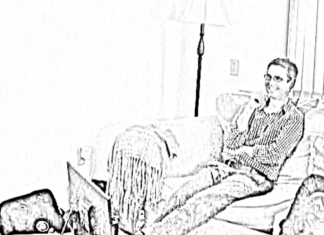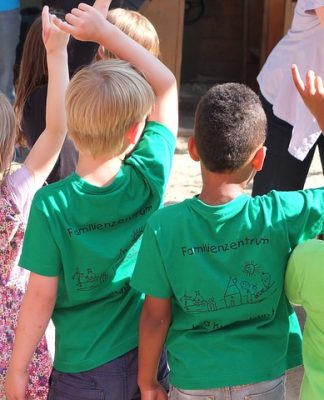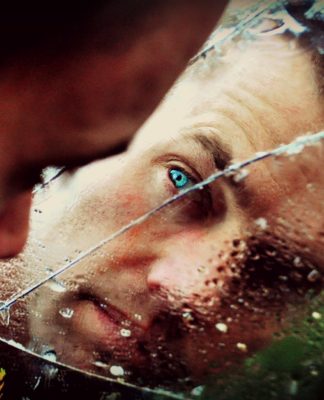Mind and Heart Coming Together
In these early years of the 21 st century, it is apparent how dangerous splits and divisions are everywhere. I believe that these separations are the root causes of the chaos inherent in our society and global community. As a practicing psychologist, I am aware how many clients who come to their psychotherapy sessions, are increasingly feeling overwhelmed by the state of the world. Their own personal life challenges are exacerbated by a divisive environment that has become a daily occurrence.
For over 25 years, in addition to teaching Developmental Psychology at Columbia University, I facilitate “Breathwork” groups in the US, Europe, and for the last number of years, in China and S. Korea. As a young psychologist 25 years ago, I was a participant in a three-year training program led by psychiatrist, psychologist Stanislav Grof MD, Ph.D. That training program certified mental health professionals to become facilitators in what Dr. Grof called Holotropic Breathwork. I became certified in this work and have been leading Breathwork groups ever since. Over the years, some colleagues and I have made some modifications in the work and now call it Transpersonal Breathwork.
What is the relevance then, of methods like Breathwork, for societal and world transformation?
The next section of this article will briefly describe the work itself. I will also share a few examples of individuals who have participated in this work. Then, I will discuss why such work may play a part in healing our planet.
What Exactly is Transpersonal Breathwork?
Simply, Transpersonal Breathwork integrates knowledge of consciousness research with psychotherapy. It is an initiatory process that brings together Western psychotherapeutic methods with various Eastern and indigenous cultural traditions. It serves as a tool to explore consciousness in its full depth and enables participants to directly experience non-ordinary or expanded states of consciousness, individually and in relation to others.
Many cultures have known non-ordinary states of consciousness for ages, often as a part of rituals. They are still used today for healing purposes. Often, however, in popular culture, non-ordinary states of consciousness are associated with intoxication, addiction, and irrationality. At the same time, there is some change that is occurring. Groups, in which participants explore different states of consciousness, are gaining popularity; scientific projects researching the latter have cropped up; and both psychiatry and psychology have started to show an increasing interest in psychotherapeutic work using such methodologies that expand consciousness.
The seemingly simple process of Breathwork is one such method. It combines meditation, music, expanded consciousness and psychological processing and integration. It provides the opportunity to explore the entire spectrum of the inner world, and leads to levels of enhanced awareness. Breath is considered the key to life. With each observed inhale, our awareness is renewed and deepened.
During a session – which lasts several hours – people lie down in a group, on mats, in a dimly lit room. With eyes closed, they meditate by breathing a little more deeply and rapidly than normal, while powerful music is played. As a person relaxes, the part of the mind that worries, plans, analyzes and fantasizes slowly gets drawn into the music, becomes the music, and then comes to stillness.
Consciousness expands. The busyness of life recedes, and other aspects of the self, such as feelings, sensations, dream-like images, visions and symbols rise from the depths of a person.
Feelings and emotions, often unconscious and repressed in one’s memory from childhood, will open up for greater self-understanding. People may release energetic blocks. They may see bright colors behind closed eyes. Some people will even re-experience what feels like that time when they were in their mother’s womb. The visions can also come from Perennial philosophy, Carl Jung’s collective unconscious, and the spiritual traditions that have been part of humanity’s history.
When the session is over, people make a drawing of their experience, and then share and discuss the implications that their experiences might have on their daily lives. The group leaders and other participants offer support and guidance. Here, psychology plays an important part in helping to put things into perspective. It is important to realize that whatever comes up for people is not random. Rather, inner wisdom provides understanding as to what area(s) of his or personality and or lifestyle the individual needs to pay greater attention. A different way of self-knowing is the harvest of the time spent. With any such growth and change, the ground beneath personal reality may radically shift. When this occurs, one’s previous identity can begin to feel fragile.
This is why emotional support and psychological integration are important parts of the Breathwork experience. People who have done Transpersonal Breathwork for awhile, have developed a fairly good sense of how to judge situations in daily life; they tend to feel authentic in their personal relationships and develop an understanding of how all things are interrelated and mutually dependent. They know that they harm themselves if they hurt another being and that they give themselves value, feel nourished and loved when they give love to others. People start to experience themselves as part of something that is much more than their personal stories. Transpersonal Breathwork can open people to a deeper, fuller life.
The next section shares examples of how Breathwork experiences healed the inner splits in two individuals and led them to a sense of wholeness. These case studies are also discussed in my book Healing the Western Soul: A Spiritual Homecoming for Today’s Seeker
(2015). Mr. Chen and Tracey Last year, a Chinese businessman in his fifties attended a Breath workshop I was facilitating. I’ll call him Mr. Chen. He was visiting various Ivy League schools in the U.S., in order to recruit talent for his country. He heard of this workshop I was giving for my graduate students at Columbia University, and he decided to attend. I had some concern and I asked a Chinese student of mine, what he thought of Mr. Chen participating. “Because of communism, questions of the inner life have been denied for 50 years in my culture, and people are empty inside,” my student explained. “They are increasingly searching for something beyond their newly acquired wealth. There is no support for inner work and much discomfort and emotional distress.”
After hearing this, I invited Mr. Chen to attend. He came, along with a translator. He was distinguished, dressed with tie and jacket, and stood out in the much younger, casually dressed group of grad students. He seemed both attentive and involved. I noticed that during the Breathwork session, he was lying absolutely still and appeared to be in a very deep state of expanded consciousness. In our sharing circle afterwards Mr. Chen began by saying in broken English that he had just experienced “the best sleep of his life.” I questioned him further because he had not looked like he was sleeping. Eventually he was able to call his experience “a dream.” I then explained that it was neither sleep nor a dream, but an expanded state of consciousness. He initially seemed unsettled by my explanation because his culture and personal experience did not acknowledge such things—it is either a dream or it is nothing. 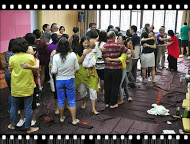
I then encouraged Mr. Chen to share the pastel drawing he had made of his experience. It was beautifully colored, with many shades blending into one another. In the center, there was a ball of pulsating brilliant white light. As he tried haltingly to express himself, this very unemotional, assertive Chinese businessman suddenly had tears in his eyes, and simply said thank you, smiling gently and nodding at me. I nodded back, my eyes also filled with tears. In spite of language and cultural difficulties and a worldview at total odds with his Breathwork experience, Mr. Chen’s deep core self, opened — and showed him his true nature.
In addition to Mr. Chen, there was Tracey, an African-American young woman. Her Breathwork experience reflected what she called her “personal empowerment.” An image of herself as a beautiful African goddess in brilliant tribal clothing, dancing with all of the animals of Africa, had come through her consciousness. She also shared that a magnificent angel had appeared in the midst of her vision, his arms spread wide, embracing them all. She said that this one experience had brought together for her the power of the feminine, her connection to her cultural and spiritual origins, and also, with the appearance of the angel, she understood that Divinity holds all creatures and beings and makes the world one.
Mr. Chen, and Tracey each had an inner experience which opened their hearts, towards themselves and humanity during their Breathwork session. Such examples have become commonplace in Breathwork retreats as people of different cultures and belief systems come to seek a new way of knowing and being. Mr. Chen came from a culture on the other side of the world. Tracey was an Afro- American woman trying to find her roots and her place in a confusing and often divisive environment. And yet, with all of this struggle and diversity, it is clear that when peoples’ deepest selves open up, they are able to see themselves and others in new and more developed ways.
What then is the lesson to take away from these examples? First, to know that when we contact that core center in the depths of ourselves, we will be guided on a path towards becoming whole. And being whole means that we fully realize that we are part of the same human race, and differences in race, culture, religion,sexual orientation or any other divisions are illusory. Such awareness is innate, it is our true human nature; even when we turn away from such knowing, that awareness will not disappear, it will remain there, waiting to be accessed at another time.
It is also important to keep in mind that all our world traditions, from the East, West, North and South– will ultimately lead us to Oneness and Unity. But in order to authentically accept others, we must first know and accept all of the influences that make us who we are. And with this knowledge, we will finally be able to transcend the qualities and splits that keep us separate from our true nature, and from one another.
I believe this is what large numbers of people today are longing for, a revitalization of the authentic human journey. Psychology in the 21 st century needs to bring people from different groups, cultures, and traditions together, and when this happens, new and creative methods can be utilized to help expand consciousness.


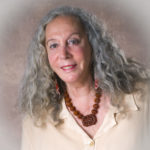 Judith S. Miller Ph.D. teaches developmental psychology and spiritual development in the Human Development Department of Columbia University. She is also on the faculty of the International Institute for Consciousness Exploration and Psychotherapy in Freiburg, Germany. In addition to supporting and offering guidance to individual seekers on their life paths, she leads psycho-spiritual training programs and retreats in the US, Europe, and Asia.
She is the author of "
Judith S. Miller Ph.D. teaches developmental psychology and spiritual development in the Human Development Department of Columbia University. She is also on the faculty of the International Institute for Consciousness Exploration and Psychotherapy in Freiburg, Germany. In addition to supporting and offering guidance to individual seekers on their life paths, she leads psycho-spiritual training programs and retreats in the US, Europe, and Asia.
She is the author of "


